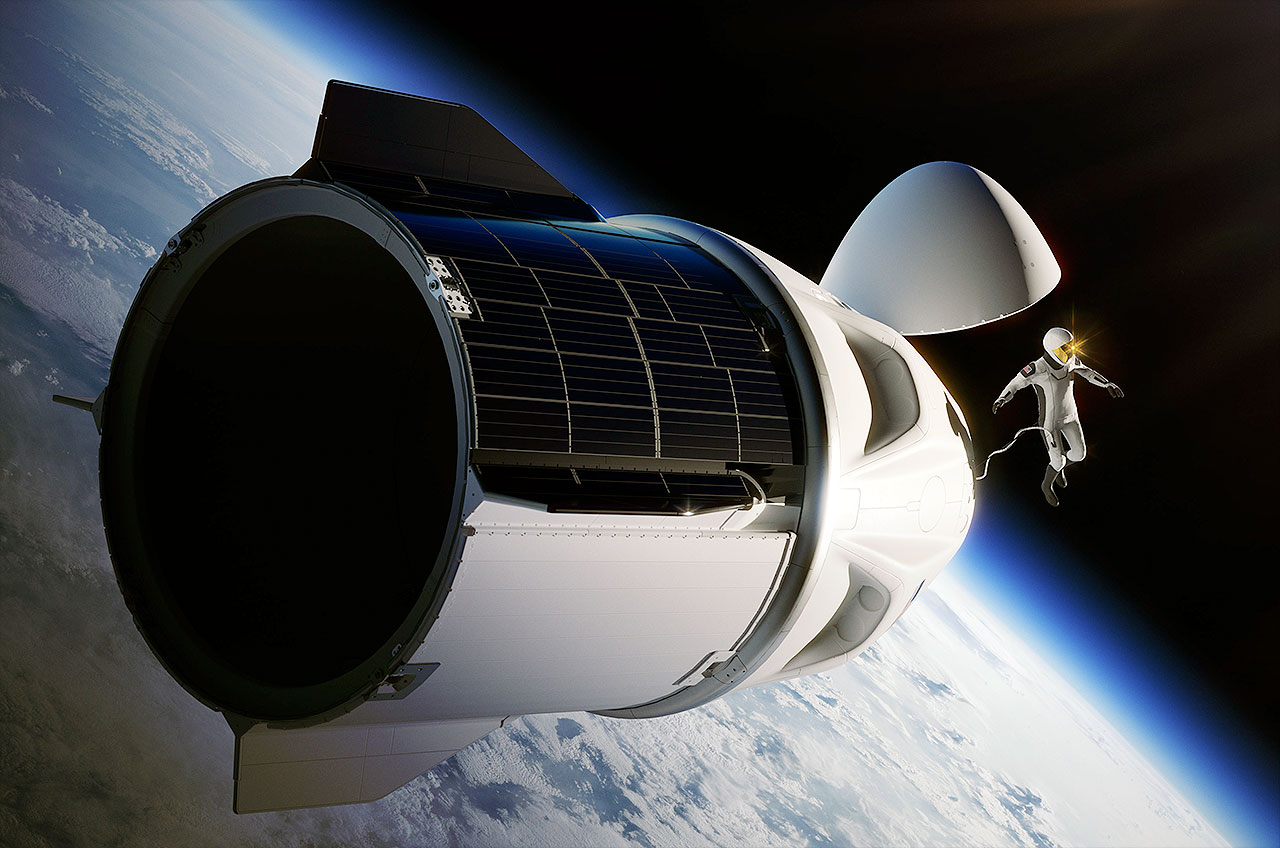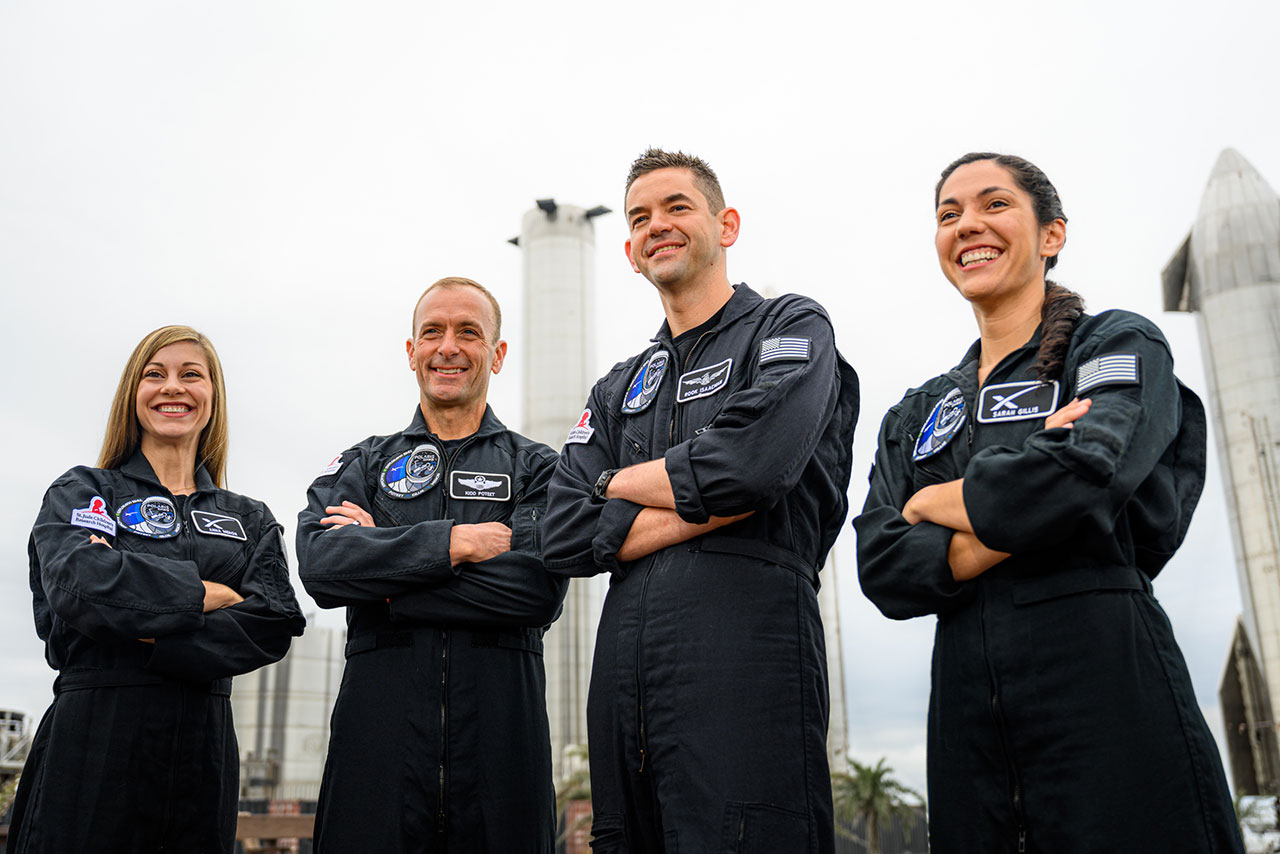Billionaire's 'Polaris Program' to set space records on SpaceX Dragon, Starship
"On Polaris Dawn, we endeavor to achieve the highest Earth orbit ever flown."

The billionaire commander of the first "all-civilian" space mission has now filed a new flight plan, underwriting a series of three SpaceX launches designed to rapidly advance human spaceflight capabilities while also raising funds and awareness for causes here on Earth.
Jared Isaacman, the 39-year-old founder of Shift4, an online payment processing company, and the commander of last year's Inspiration4 mission, revealed his "Polaris Program" on Monday (Feb. 14), a trio of commercial spaceflights to begin on SpaceX's existing Dragon spacecraft as soon as November or December of this year and culminate in the first crewed launch of SpaceX's new Starship in the years to come.
"The Polaris Program is an important step in advancing human space exploration while helping to solve problems through the use of innovative technology here on Earth," Isaacman said in a statement.
Meet the crew: These are the 4 private astronauts of SpaceX's Polaris Dawn

The program's first launch, dubbed "Polaris Dawn," will launch Isaacman as mission commander, together with three crewmates, including: pilot Scott "Kidd" Poteet, a retired lieutenant colonel in the U.S. Air Force who served as the mission director for Inspiration4; mission specialist Sarah Gillis, who oversees SpaceX's astronaut training program; and medical officer Anna Menon, who manages the development of SpaceX's crew operations while also serving the company's mission control. (Menon is also the wife of Anil Menon, a member of NASA's latest astronaut candidate class, meaning she will fly into space before her husband.)
Polaris Dawn
The Polaris Dawn crew will expand upon the achievements of the record-setting Inspiration4 mission. In September 2021, Isaacman and his three Inspiration4 crewmates (Sian Proctor, Hayley Arceneaux and Chris Sembroski) spent three days aboard a Dragon spacecraft in Earth orbit, reaching a maximum altitude of 364 miles (565 kilometers) — the fifth-highest orbital human spaceflight in history.
"On Polaris Dawn, we endeavor to achieve the highest Earth orbit ever flown," Isaacman said.
Breaking space news, the latest updates on rocket launches, skywatching events and more!
That record is currently set at 853 miles (1,373 km), as achieved by NASA's Gemini 11 astronauts, Charles "Pete" Conrad and Richard "Dick" Gordon, in 1966. Apollo crew members, including Conrad and Gordon, later flew farther from Earth on missions to the moon, but the Gemini 11 record continues to stand today as the highest Earth orbit reached by astronauts.
At its peak altitudes, the Polaris Dawn mission will pass through portions of the Van Allen radiation belt — the donut-shaped swaths of magnetically-trapped, highly-energetic charged particles that surround Earth — providing the crew the opportunity to collect data on the effects of space radiation exposure on human health as among the mission's science research objectives.

Lower in their orbit, at approximately 300 miles (500 km) above Earth, at least two of the Polaris Dawn crew members will attempt the first commercial extravehicular activity (EVA), or spacewalk. SpaceX's Dragon does not include an airlock, so the entire cabin will be depressurized before the hatch is opened. For the EVA, the crew will wear new SpaceX-designed spacesuits, upgraded from the company's existing pressure suits.
Guiding light
The development of the new spacesuits, along with a planned first test of SpaceX's Starlink satellite network for laser-based communications in space, are intended to advance the technologies needed for future missions to the moon, Mars and into deep space. Like its namesake Polaris, which is a constellation of three stars more commonly known as the "North Star," the Polaris Program seeks to be a guiding light, helping humanity navigate its way to new destinations.
The second Polaris mission will follow based on what the crew and SpaceX learn during the first mission.
The third launch will be the first human spaceflight of SpaceX's Starship, a heavy-lift rocket and spacecraft that is being developed as the world's first fully-reusable transportation system designed to carry both crew and cargo into Earth orbit, to the moon, Mars and elsewhere further out into the solar system. The date for that mission is unknown, but will come after the vehicle has been tested on numerous uncrewed flights.
Like the Inspiration4 mission, which through contests, auctions, sales and donations raised a total of $240 million for St. Jude Children's Research Hospital, the Polaris Program also seeks to benefit the hospital's programs to to improve the global survival rates for childhood cancer.
Follow collectSPACE.com on Facebook and on Twitter at @collectSPACE. Copyright 2022 collectSPACE.com. All rights reserved.

Robert Pearlman is a space historian, journalist and the founder and editor of collectSPACE.com, a daily news publication and community devoted to space history with a particular focus on how and where space exploration intersects with pop culture. Pearlman is also a contributing writer for Space.com and co-author of "Space Stations: The Art, Science, and Reality of Working in Space” published by Smithsonian Books in 2018.
In 2009, he was inducted into the U.S. Space Camp Hall of Fame in Huntsville, Alabama. In 2021, he was honored by the American Astronautical Society with the Ordway Award for Sustained Excellence in Spaceflight History. In 2023, the National Space Club Florida Committee recognized Pearlman with the Kolcum News and Communications Award for excellence in telling the space story along the Space Coast and throughout the world.

